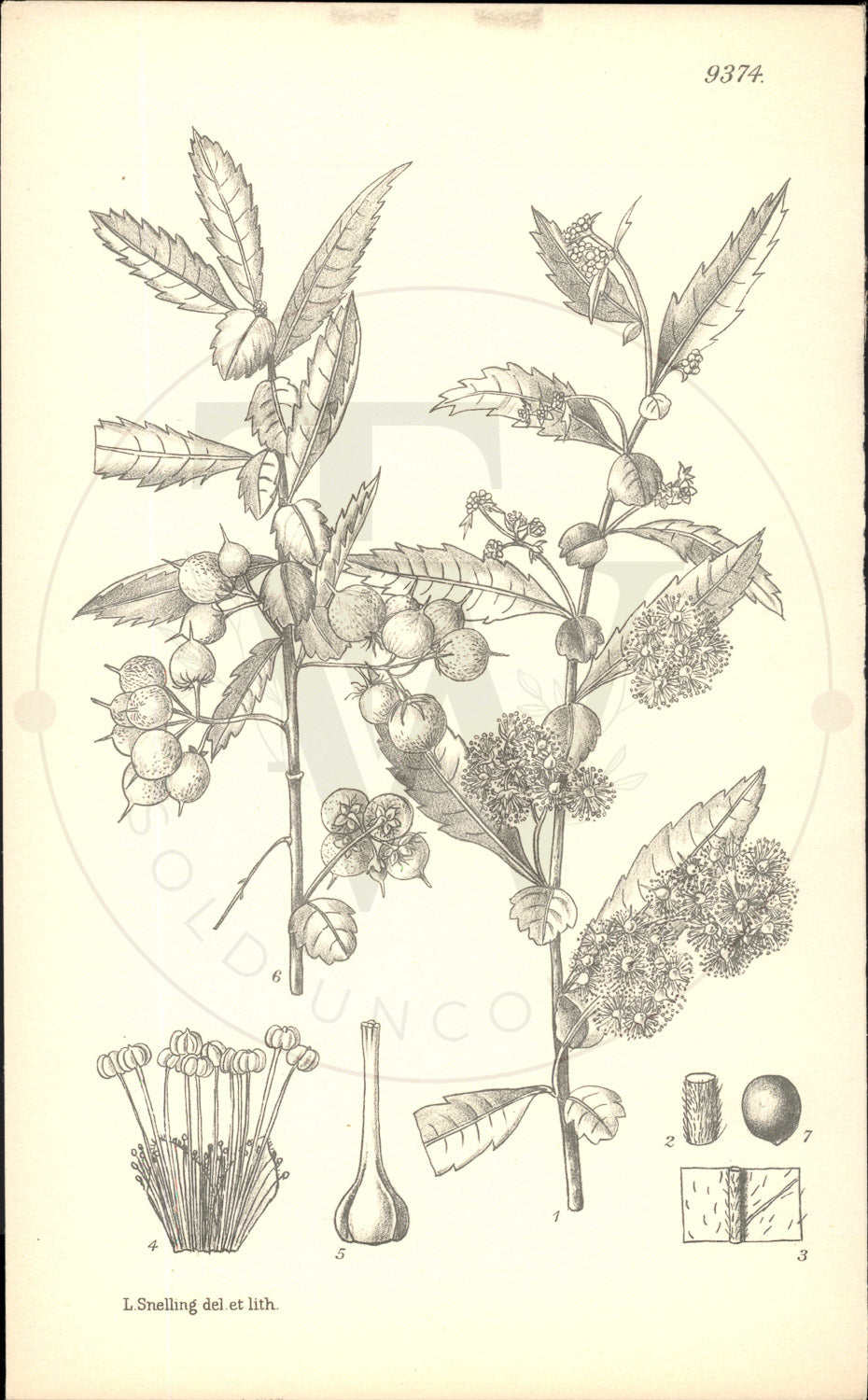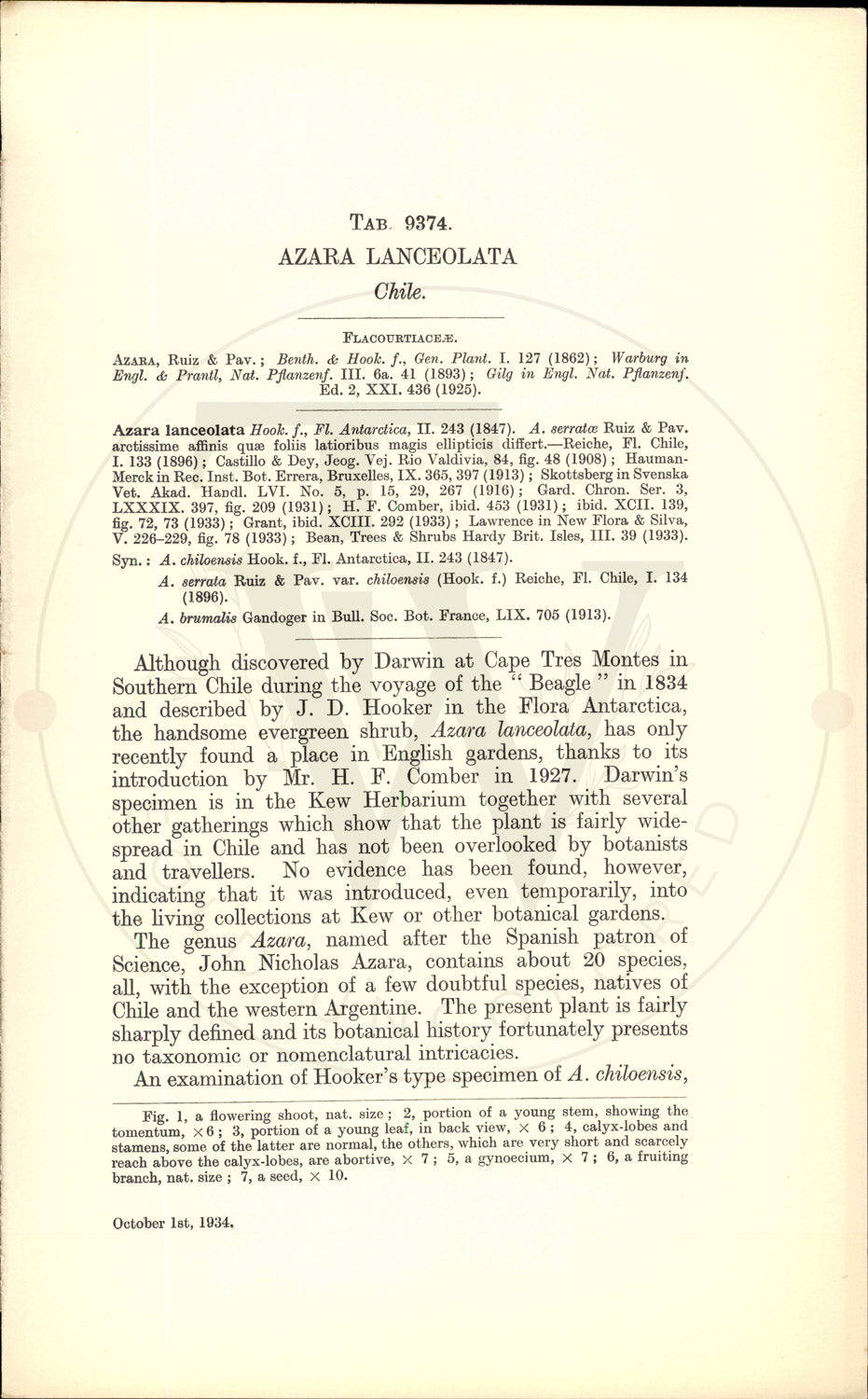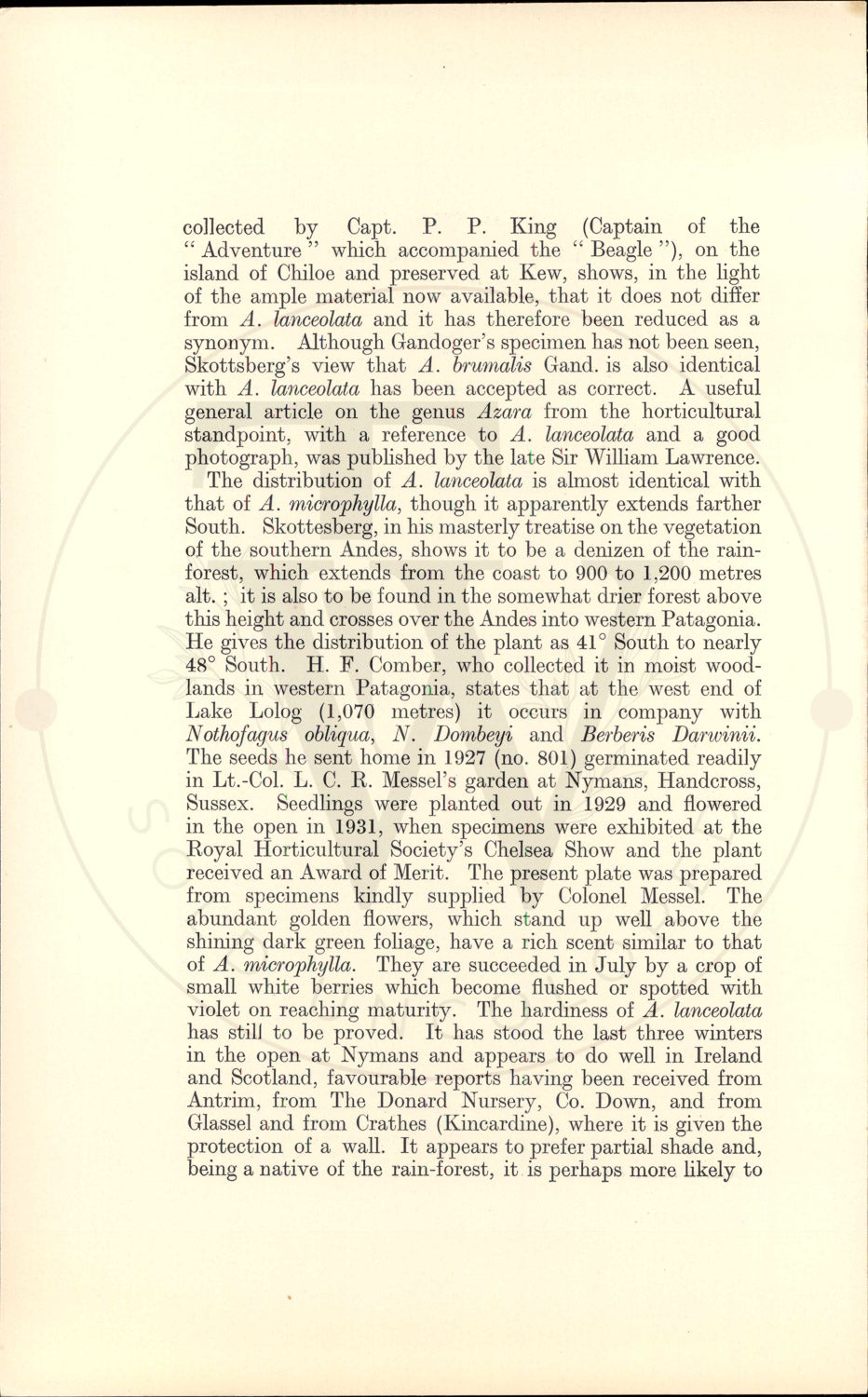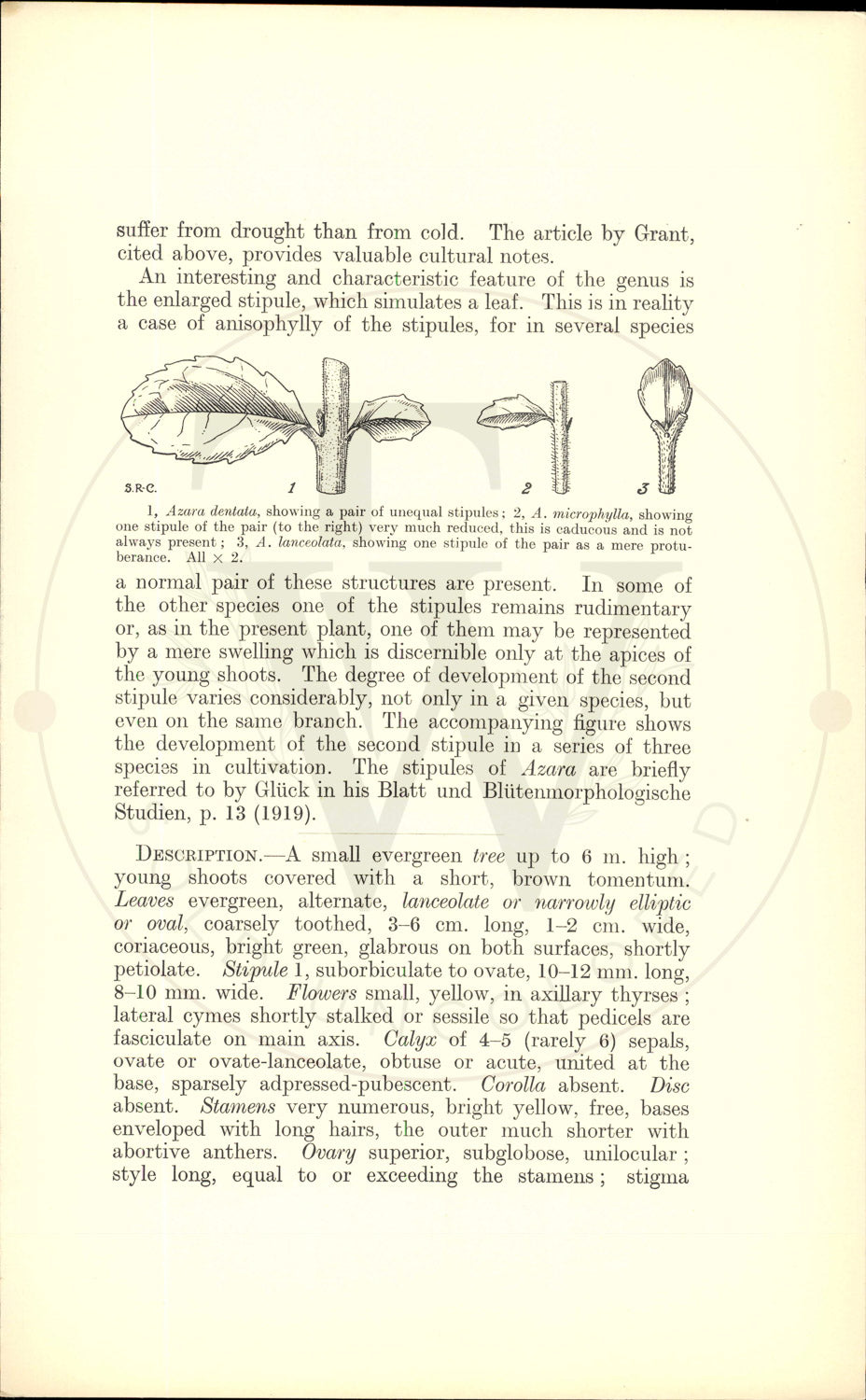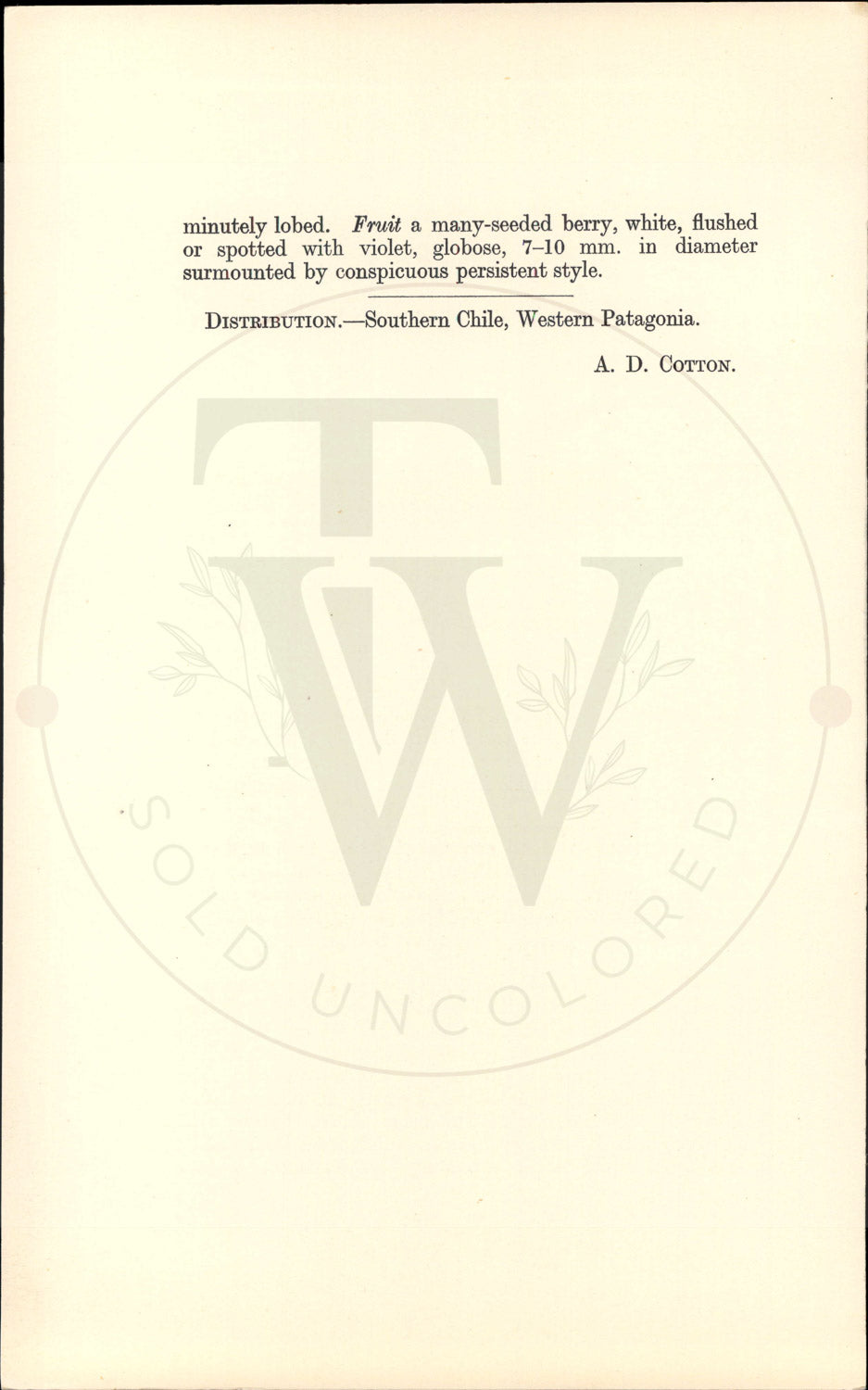Curtis Botanical Magazine
Plate 9374 - Azara lanceolata
Plate 9374 - Azara lanceolata
Couldn't load pickup availability
Curtis's Botanical Magazine - Plate 9374
Azara lanceolata
Family: FLACOURTIACEAE • Publication Date: October 1st, 1934
Distribution: Eastern Bulgaria, on the low hills near Varna, overlooking the Black Sea. • Tab Author: W. B. TURRILL.
Botanical Description
Although discovered by Darwin at Cape Tres Montes in Southern Chile during the voyage of the "Beagle" in 1834 and described by J. D. Hooker in the Flora Antarctica, the handsome evergreen shrub, Azara lanceolata, has only recently found a place in English gardens, thanks to its introduction by Mr. H. F. Comber in 1927. Darwin's specimen is in the Kew Herbarium together with several other gatherings which show that the plant is fairly wide- spread in Chile and has not been overlooked by botanists and travellers. No evidence has been found, however, indicating that it was introduced, even temporarily, into the living collections at Kew or other botanical gardens. The genus Azara, named after the Spanish patron of Science, John Nicholas Azara, contains about 20 species, all, with the exception of a few doubtful species, natives of Chile and the western Argentine. The present plant is fairly sharply defined and its botanical history fortunately presents no taxonomic or nomenclatural intricacies. An examination of Hooker's type specimen of A. chiloensis,.
Synonyms
Syn. A. chiloensis Hook. f., Fl. Antarctica, II. 243 (1847). A. serrata Ruiz & Pav. var. chiloensis (Hook. f.) Reiche, Fl. Chile, I. 134 (1896). A. brumalis Gandoger in Bull. Soc. Bot. France, LIX. 705 (1913). Although discovered by Darwin at Cape Tres Montes in Southern Chile during the voyage of the "Beagle" in 1834 and described by J. D. Hooker in the Flora Antarctica, the handsome evergreen shrub, Azara lanceolata, has only recently found a place in English gardens, thanks to its introduction by Mr. H. F. Comber in 1927. Darwin's specimen is in the Kew Herbarium together with several
About This Print
Original black and white uncolored botanical print from Curtis's Botanical Magazine (established 1787). This 9000s series print is from unissued publisher stock, never hand-colored, representing the authentic plate as it appeared in the magazine. Edited by Sir Arthur William Hill for The Royal Horticultural Society, London.
Share
